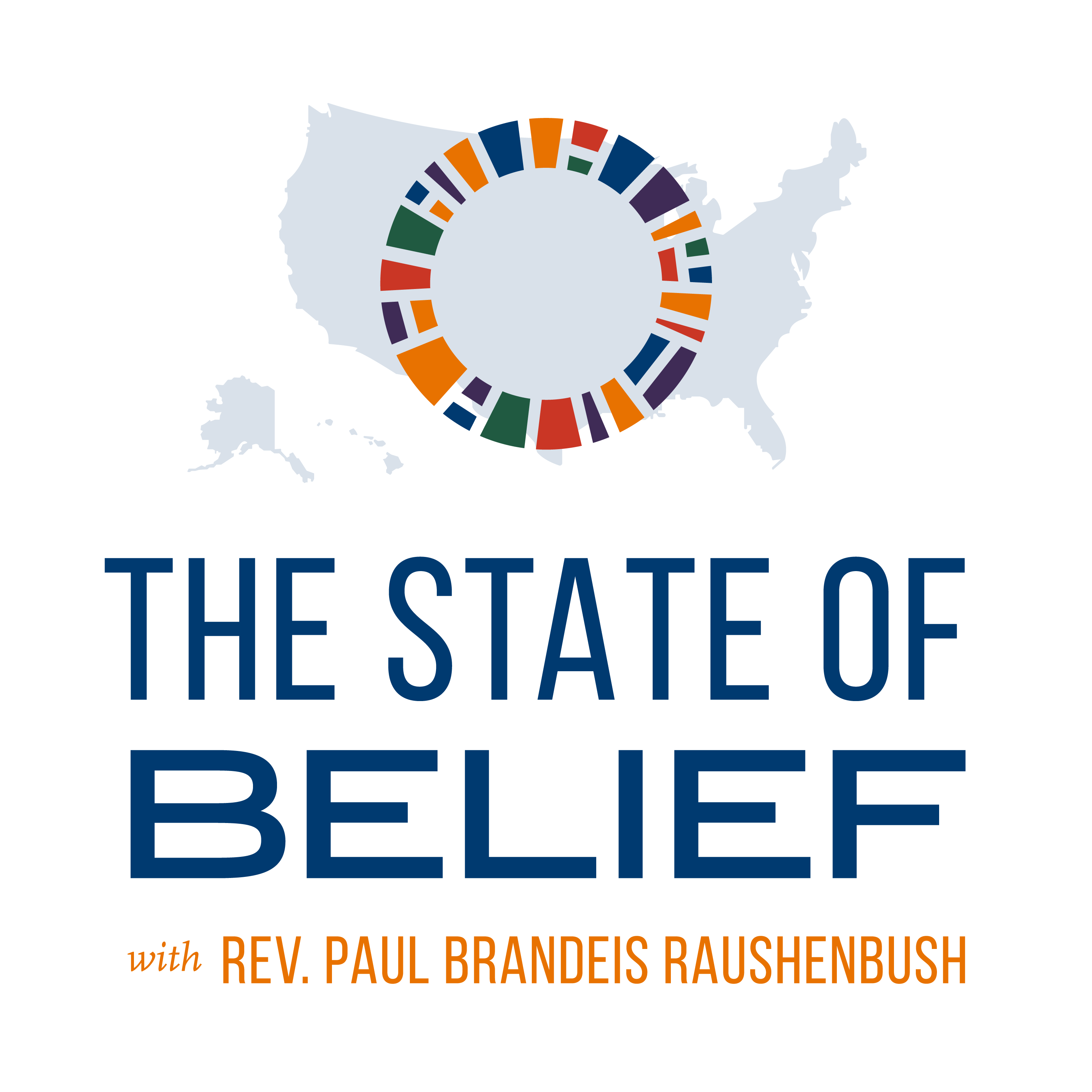Dr. Mark Van Stone is a preeminent expert on ancient Maya art and civilization. So who better to ask if there’s even a point to Christmas Shopping this year? Hear the definitive answer regarding the December 21, 2012 date for the end of the world: did the ancients really mark that date on their calendar?
Click here to learn about Dr. Van Stone’s book, “2012: Science and Prophecy of the Ancient Maya.”
INTERFAITH ALLIANCE STATE OF BELIEF RADIO DECEMBER 8, 2012
RUSH TRANSCRIPT: Mark Van Stone Interview
[REV. DR. C. WELTON GADDY, HOST]: Dr. Mark Van Stone is one of the nation’s leading experts on Mayan culture and art, and his lifetime study of this ancient civilization certainly qualifies him to help all of us decide if it’s worth doing any Christmas shopping at all this year.
Dr. Van Stone, welcome to State of Belief Radio!
[DR. MARK VAN STONE, GUEST]: Well thank you, I’m glad to be here. [WG]: Before I ask you the Big Question, please summarize for us how the Mayans came to be seen by some as a very prophetic culture? [MS]: About 100 years ago there were some scholars that, basically, knew how to read Maya dates – and little else – from their inscriptions, and who speculated on some of the artwork of the Maya, that it showed a flood, and they compared it to the flood at the end of the world, and that was the beginning of the Maya meme; that was about 110 years ago. [WG]: Was there something unique about the way the Mayans represented their wisdom and beliefs in their art? [MS]: Yes there was. The Maya were very, very good at mathematics. Of all the mathematical systems of ancient peoples like the Romans, like the Greeks, like the Chinese – the Mayas were the most advanced mathematicians. And we know from their inscriptions that they were also good astronomers, and they were pretty important to them. And in fact their astronomy was laced with astrology, and their mathematics was laced with numerology. But when you learn that the Maya were able to calculate huge numbers that the Egyptians and the Romans never did, that makes them seem very advanced, very sophisticated. Which is fabulous. One of the interesting things to me is that the Maya had all these amazing intellectual – shall we say – intellectually they were very advanced, but they were still in the stone age! They never developed the wheel, they never developed metals. [WG]: Huh. Am I right, you’ve been studying this ancient civilization for decades? [MS]: Yeah. I got started in the mid-80’s. I studied the writing of other ancient cultures before that, I was really into calligraphy and hieroglyphs, and I think it’s really interesting that the Maya and the Egyptians, for instance, covered their world with inscriptions; and yet the people on the streets at that time were just as ignorant of their writing as the tourists are today! I’m sure that some farmers would come into town at Palenque and say, “Wow! I wish I could read that, that’s really beautiful,” same as we do. And so they made it really beautiful because the beauty of it is what communicated to the people that couldn’t read it. [WG]: Well, your credentials, Dr. Van Stone, offer us the very kind of confidence that we need to ask you this Big Question, and so I’m going to ask it: if you were to call me up on December 22nd, would I be likely to answer? [MS]: Yes you would. The Maya, actually, never predicted any end to their calendar or their culture, and everything that you hear about the prophecies of the Maya is really projection – modern projection – people fantasizing, and placing it on the Maya. And of course, the Maya are good recipients of this, because we really know so little about them. They’re a blank slate on which people… I call it the “here be dragons” phenomenon, where you see a map, you have the middle of America which for centuries took a long time to fill in, and that’s where they put the dragons on the map, because everybody knows there’s dragons somewhere! [WG]: So what happened then, did people read the hieroglyphics, the writing of the Maya and misunderstand it and leap to predictions? What do you see in these writings that they don’t get? Or were they just looking for something to publicize? [MS]: There was something in the Maya writings. They should have called their creation date “00-00-00” if they counted time like we do. But to them, the date of their creation was called “13-00-00.” And that means that there was a 5,000-year period before creation that they designated as the time the gods ruled and built the world – or prepared the world, if you will – and it’s been 5,000 years since that creation date. So 13-00-00 means thirteen times 400 Maya years, plus zero decades, years, months and days; and that amount of time has almost passed again. It’s now to the year 12-19-19 and 17-something. And it’s very close to the 13-00-00 date again. And that coincidence is what’s got scholars speculating that the Maya believed that this 13-00-00 cycle was a recurring thing.It turns out it’s iot recurring. There is one inscription which clearly says that they’re going to go on to the 14th katun and on to the 15th, and on to the 20th. And that inscription is at Palenque, it’s at the Temple of the Inscriptions, and it goes through the year 47-72. And it says that on that date “our great King Pakal will be celebrated,” that they’re going to be celebrating an anniversary of his coronation. And that tells me two things. It says that they are telling us that the calendar itself does not end – it keeps going – keeps on going up, doesn’t even restart; and that they believed their civilization would go on for another 4000 years. That as far as they were concerned, there is no end to the calendar, there’s no end to their culture. Which is the exact opposite of everyone’s speculation. And once that became known to scholars, they said: “Oh! We were wrong.” And that memo didn’t get out to the public, which had already taken the idea that the cycle of 5000 years, the cycle of creation and destruction, and they were running with it by then. And they didn’t get the memo.
[WG]: Well that is as clear an explanation of the situation that I have heard, and I understand it. I just want to validate it by one other question: do you have engagements on your calendar after December 21st? [MS]: Certainly, I do! In fact, my friends and I are going down to Chichen Itza because we want to be at ground zero on that fateful day. But yes, I have other engagements in my future. [WG]: Dr. Mark Van Stone is Professor of Art History at Southwestern College, and a renowned expert on ancient Mayan hieroglyphics. His latest book is “2012: Science and Prophecy of the Ancient Maya.” You can get that book from Amazon, and it’s just out in a new interactive digital version, so if you want to hear more like this conversation – go get that book, “2012: Science and Prophecy of the Ancient Maya.”Dr. Van Stone, I feel confident that we have laid to rest these apocalyptic fears about December 21st once and for all, and surely the rest of our society will quit worrying about it, don’t you think?
[MS]: If they listen… [WG]: Well, thanks so much for making the time to be with us today on State of Belief Radio! [MS]: Thank you. Take care.————————
State of Belief is based on the proposition that religion has a positive and healing role to play in the life of the nation. The show explains and explores that role by illustrating the vast diversity of beliefs in America – the most religiously diverse country in the world – while exposing and critiquing both the political manipulation of religion for partisan purposes and the religious manipulation of government for sectarian purposes.
Each week, the Rev. Dr. C. Welton Gaddy offers listeners critical analysis of the news of religion and politics, and seeks to provide listeners with an understanding and appreciation of religious liberty. Rev. Gaddy tackles politics with the firm belief that the best way to secure freedom for religion in America is to secure freedom from religion. State of Belief illustrates how the Religious Right is wrong – wrong for America and bad for religion.
Through interviews with celebrities and newsmakers and field reports from around the country, State of Belief explores the intersection of religion with politics, culture, media, and activism, and promotes diverse religious voices in a religiously pluralistic world.
———————–
Author of more than 20 books, including First Freedom First: A Citizen’s Guide to Protecting Religious Liberty and the Separation of Church and State, the Rev. Dr. C. Welton Gaddy leads the national non-partisan grassroots and educational organization Interfaith Alliance and serves as Pastor for Preaching and Worship at Northminster (Baptist) Church in Monroe, Louisiana.
In addition to being a prolific writer, Dr. Gaddy hosts the weekly State of Belief radio program, where he explores the role of religion in the life of the nation by illustrating the vast diversity of beliefs in America, while exposing and critiquing both the political manipulation of religion for partisan purposes and the religious manipulation of government for sectarian purposes.
Dr. Gaddy provides regular commentary to the national media on issues relating to religion and politics. He has appeared on MSNBC’s The Rachel Maddow Show and Hardball, NBC’s Nightly News and Dateline, PBS’s Religion and Ethics Newsweekly and The Newshour with Jim Lehrer, C-SPAN’s Washington Journal, ABC’s World News, and CNN’s American Morning. Former host of Morally Speaking on NBC affiliate KTVE in Monroe, Louisiana, Dr. Gaddy is a regular contributor to mainstream and religious news outlets.
While ministering to churches with a message of inclusion, Dr. Gaddy emerged as a leader among progressive and moderate Baptists. Among his many leadership roles, he is a past president of the Alliance of Baptists and has been a 20-year member of the Commission of Christian Ethics of the Baptist World Alliance. His past leadership roles include serving as a member of the General Council of the Cooperative Baptist Fellowship, President of Americans United for Separation of Church and State, Chair of the Pastoral Leadership Commission of the Baptist World Alliance and member of the World Economic Forum’s Council of 100. Rev. Gaddy currently serves on the White House task force on the reform of the Office of Faith Based and Neighborhood Partnerships.
Prior to the fundamentalist takeover of the Southern Baptist Convention (SBC), Dr. Gaddy served in many SBC leadership roles including as a member of the convention’s Executive Committee from 1980-84 and Director of Christian Citizenship Development of the Christian Life Commission from 1973-77.
Dr. Gaddy received his undergraduate degree from Union University in Jackson, Tennessee and his doctoral degree and divinity training from the Southern Baptist Theological Seminary in Louisville, Kentucky.



